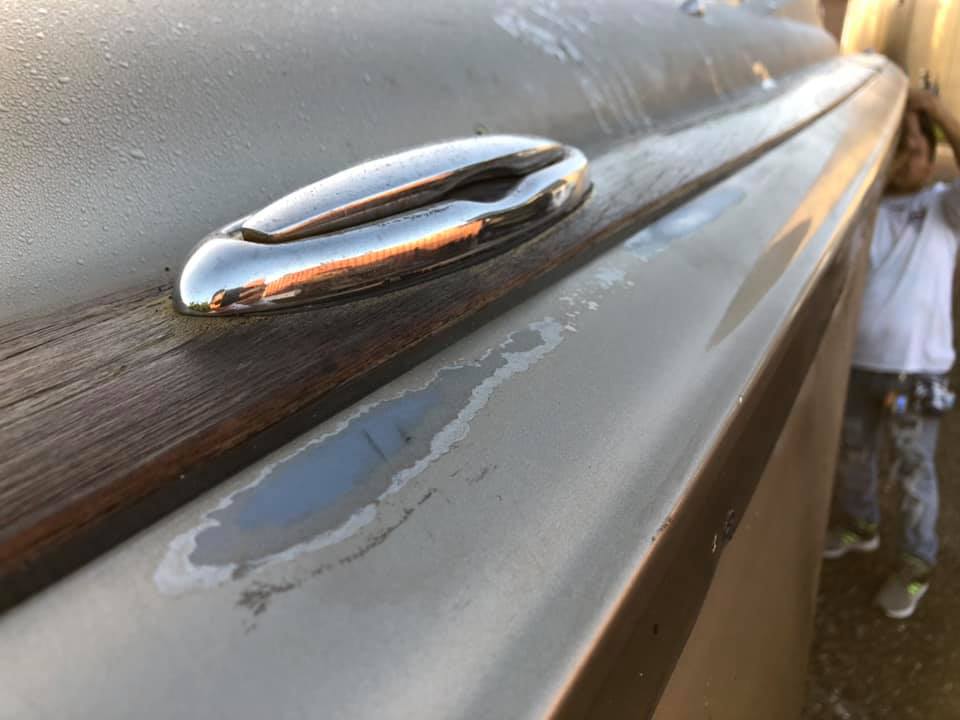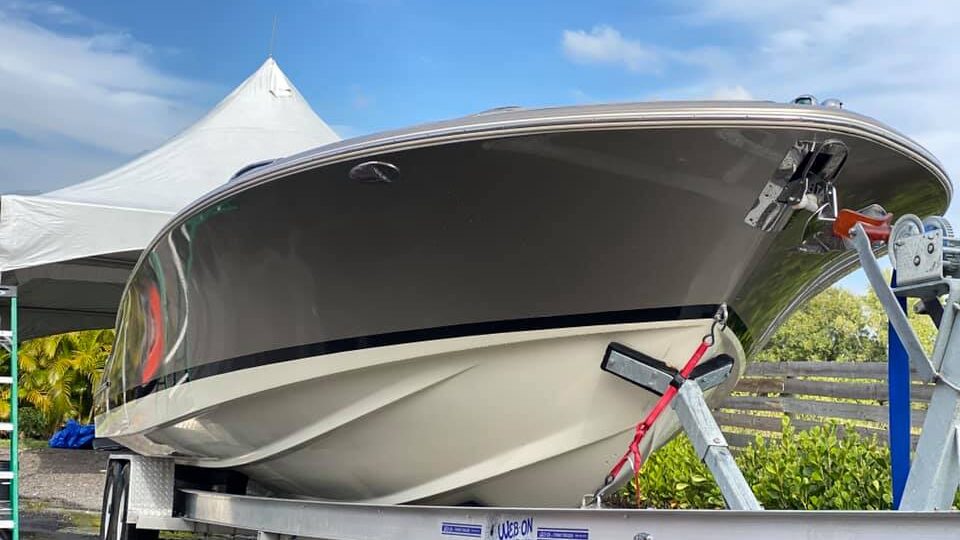Painting Gelcoat: How To
Boats are usually manufactured with either one of two materials; fiberglass or aluminum. The outer surface of a fiberglass manufactured boat is usually coated with a special resin called Gelcoat.
Today, Gelcoat is most common as a surface finisher and known for its ability to improve a product’s appearance; products such as the surface of a boat/sailboat hull. Before the manufacturing of this resin, a research group by Dr. Carothers at DuPont developed unsaturated polyester resins (UPR) in the late 1920s. Pigmented Gelcoat was being offered for sale by the early 1950s.
Gelcoat is a substance used to provide a premium finish on the visible surface of a fiber-reinforced composite. It is used in a bunch of construction and abrasive prevention applications and quite evident in the making of boats. This material is a liquid that hardens to form a thick layer. It is thicker than paint and is designed to protect the underlying fiberglass from scratches and moisture damage. It also gives a smooth, shiny appearance to the hull of the boat. Mostly, Gelcoat is applied from the factory.
A generic mistake most people make about Gelcoat is that they give it the same treatment as paint. They try to be tidy and perfect with the coating. This material, in turn, provides the surface with streaks and brush lines because it is applied too thinly, like paint.
The Application of Gelcoat is Quite Easy;
- You examine the surface that Gelcoat is to be applied on, and if the surface is fiberglass or polyester resin, the application will be relatively easy. If it has been painted before, the paint will need to be removed before applying Gelcoat.
- Next, you clean the surface. Acetone, as it is the most commonly used, is the go-to cleaning solvent for boats or metal surfaces.
- Then, you load your brush with Gelcoat, and when it comes in contact with the mold, you spread, dab or dot. Exotherm will build up when the gel coats in a large mass, and that will make the Gelcoat dry up way too quickly.
- After it is dried up, you sand the lines and wax them to give a smooth surface.
When deciding what materials to use, there are four key things to consider;
- Durability
- Appearance
- Repairability
- Maintenance
Durability
As stated earlier, Gelcoat is thicker than paint by ⅛ of an inch (which is paper-thin). Gelcoat has more of an advantage and takes the cake in comparison to paint on the durability stand. If a boat/sailboat with Gelcoat applied on it is scratched, you can sand it, buff it up, and it looks just brand new, unlike a painted boat that will show a scratch no matter how little.
Another test for durability is the chemical test–how well they react to chemicals; flammable liquids you would typically see on a boat, such as gasoline, diesel, etc. Both Gelcoat and paint react well to them, but Gelcoat surface is more equipped in that area than a painted surface. Also, when we talk of durability, we speak of how long it will last and how easily the color will wear off. Gelcoat fades easier than paint does. Gelcoat starts to wear off pretty easily as soon as the sun hits it. When new Gelcoat is placed over an old one, the difference is clear, but for paint, the new and old one will match each other.

>>Also Read: How Long Do Sailboats Last?
Appearance
Gelcoat is a lot shiny when applied on smaller surfaces with a stick or brush as it requires no equipment for application. But for larger areas, Gelcoat needs to be sprayed. Paint, on the other hand, is easier to use in smaller areas and would look perfect if sprayed. For larger areas, there is an advantage of rolling and tipping it, especially for those working in garages. Rolling and tipping look better than spraying.
Repairability
Is it easy to fix? When repairing your boat, the first part of finishing is the color matching process. Gelcoat is tricky for newcomers in the game and could be frustrating. But with paint, it is easier to match colors.
Maintenance
The longevity of Gelcoat is one of its biggest advantages. Gelcoat may last up to 20 years without any need for a significant repair, but the paint will most likely require any least one within the same duration of 20 years.
To keep up with the appearance of the boat, there are a few tricks one can do, especially since Gelcoat wears off easily.
- You can apply marine wax quarterly to protect it from sun and contaminants and also keep it glossy and shiny.
- No matter how dirty the boat may or may not be, it is advisable to bathe every inch of fiberglass with freshwater after every trip in saltwater. If not, when the saltwater dries up, it leaves crystals behind. These crystals intensify the sun rays and ultraviolet light. This, in the end, will lead to the breakdown of the material (Gelcoat) applied to the fiberglass. Also, UV is a big enemy of wax, a composition in Gelcoat.
Now, it’s safe to say that with time and a bit of wearing off, a boat owner’s preference may change. After you might have cleaned, smoothed, and waxed the boat, it looks good for a while, till it starts to lose its sleekness and color. The boat owner may prefer using paint instead of Gelcoat or want to apply more Gelcoat to the older wearing-off Gelcoat. These options are easily achievable with the following tips. If the Gelcoat is in good condition with no corrosion or major cracking, the job is rather unambiguous–you tidy the surface, use an epoxy primer, sand the primer, dust off the sanding residue, and lay the topcoat. But if there is a little crack, corrosion, or oil spills, you should do the following:
How To Paint Over Gelcoat
Firstly, you decide if you would rather a professional do the job or you, with little or no experience. After making your decision, you clean your boat thoroughly with Acetone, preferably. It is advisable to use soaps specifically made for boats as dishwashing liquids may be too hard on the wax and lead to its breakdown. This cheap hull cleaner will do the job just fine.
Secondly, you mark the cracked spots and apply tapes to them. Then, you remove the coat that is not bonding with the others to give it a smooth surface. After removing the coat, you apply a thin coat of epoxy putty to fill the surface as it dries quickly and is easier to sand. Subsequently, you apply a high build primer and a coat or two of finish primer after the cracks have been filled. The sanding of the finish primer should be done with a 300-420 grit sandpaper. After the sanding, clean the residue. Once cleaned, apply few coats to finish.
It is advisable to note that when painting, there are a few things to consider, which include; having the skills to work on a boat, the best time to work on the boat, how long it will take, the tools for the job, availability of the equipment, among other things. When these things are in order, revamping a boat will be a piece of cake.
